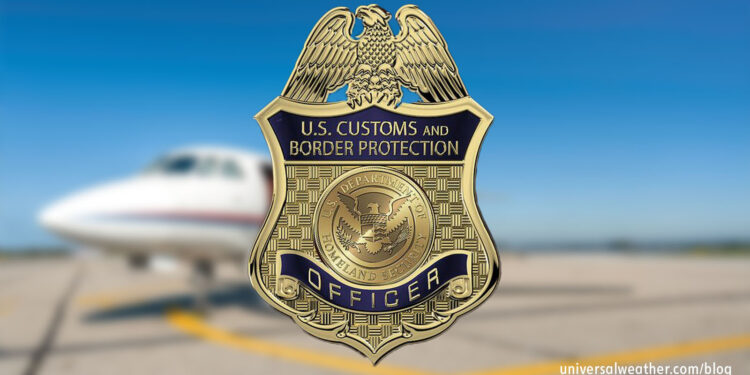U.S. Customs for Non-U.S. Registered Charter Aircraft (Pre-Trip): Making U.S. Customs Arrangements

This business aviation blog post is the first part of a series on U.S. Customs for Non-U.S. Registered Charter Aircraft.
The U.S. has a rigorous customs clearing process. Any errors in the APIS and customs set up and clearance process can result in operational delays and challenges to what should otherwise be a smooth inbound charter experience. Non-U.S. registered charter (non-scheduled commercial) operators face additional requirements, and diligent pre-planning is essential. The good news is that potential operational glitches can be avoided with adequate pre-trip planning and working with an experienced 3rd-party provider.
Here are some key things you need to know when making U.S. customs arrangements:
1. You’ll need to clear customs when arriving or departing the U.S.
All charter (non-scheduled commercial) aircraft must clear U.S. customs when arriving in the U.S. or departing from the U.S. to a foreign country or foreign area of interest, such as St. Thomas (TIST). Customs clearance is applicable to all flights, even technical stops.
2. You are required to have the following information available before setting up customs
Compared to U.S. registered aircraft, the customs process for non-U.S. registered charter is generally more complex and has additional requirements that must be met. Here’s the information needed to set up customs:
- Commercial APIS carrier code
- U.S. customs bond
- Customs notification and APIS filing for arrival and departure
- Permission to proceed for any internal flights within the U.S. (obtained after initial arrival)
- Master Crew List (MCL) on file
- TSA waiver for any domestic travel within the U.S.
- TSA waiver for overflying the U.S. (depending on where the aircraft is registered in and the itinerary)
- Visas required for non-U.S. nationals or Green Card holders, including both crew and passengers, with the exception of Canadian nationals and British nationals who have passports issued in Bermuda; these may enter U.S. without visas for tourism only
3. Crew must carry all required documentation
Crew should carry copies of the general declaration (GENDEC), APIS transmission and confirmation, C1D crew visas and copies of U.S. Customs Bond, TSA Waiver and Border Overflight Exemption (BOE) when applicable.
4. Lead times to notify customs vary from 1-2 hours to 48-72 hours
Lead-time requirements are the same for both non-U.S. registered and N-registered flights. Notification lead time will depend on the airport. Designated airports of entry (AOE) usually require 1-2 hours prior notification, while user-fee and landing-rights airports often require 48-72 hours notification.
5. Any manifest information changes may require additional customs arrangement revisions
If any flight crew or passenger manifest information changes, revisions may be required for APIS and/or customs. A new APIS transmission is not required if a passenger is removed from the manifest, but you should call and notify customs. Additionally, best practice is to confirm that any revisions sent to customs have been received. It’s important to note that obtaining the additional required documents can require longer lead times. For example, a TSA Waiver application can take up to five business days to receive approval, and a U.S. Customs Bond can require 6-8 weeks to obtain the confirmation.
6. National Security Entry-Exit Registration System (NSEERS) no longer applies
NSEERS was permanently suspended as of April 18, 2011. This requirement mandated additional entry requirements for non-U.S. nationals of interest or perceived threat, including nationals of Syria, Libya, Iran, Philippines, and Saudi Arabia. However, this was suspended as it was determined to be an unnecessary duplication of crew/passenger screening/vetting.
Conclusion
Arrangements for U.S. customs clearance is one of many critical elements in the trip-planning process for non-U.S. registered charter aircraft. It’s important to carefully consider all documentation and lead- time requirements and work with your 3rd-party provider to manage any manifest or schedule changes.
Questions?
If you have any questions about this article, contact me at adamhartley@univ-wea.com.




